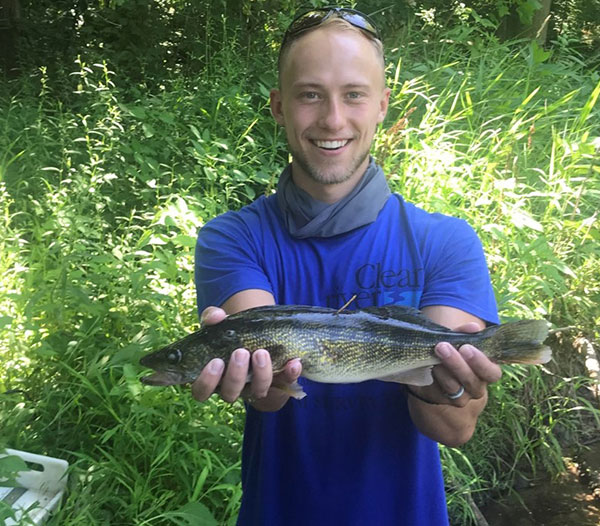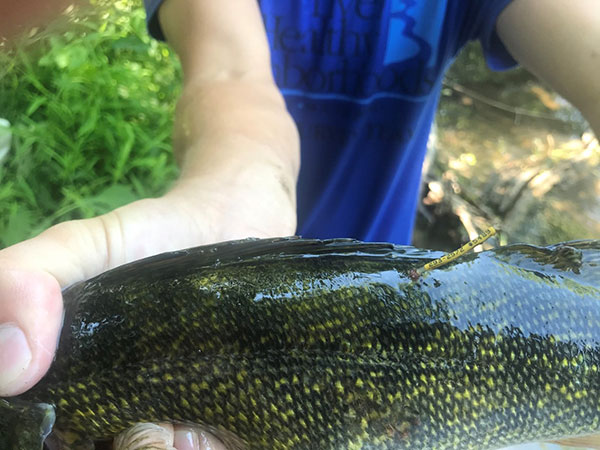By Louie Stout
 Tagged Walleye
Tagged Walleye
St. Joseph River Biologist Dar Deegan’s tagging program is providing insight into how walleyes move around in the river.
Deegan began a tagging program in 1998 to track the history, movements and growth of walleyes stocked by the Indiana DNR and the Michiana Walleye Club.
Although not all of that data has been analyzed and the project is ongoing, it’s providing interesting clues about walleyes in the river.
It also confirms what most anglers have suspected.
“We’re finding walleye have a significant migratory pattern,” Deegan says. “Very early in the year they move upriver around the dams, but then move downriver to settle into the impounded sections, especially like the Maggie’s Landing area, during summer months.”
The walleyes were 12 inchers or larger at the time of tagging, picked up during fish surveys conducted by his crew over the years. The yellow tags, located on the upper back of the fish, include an identification and phone number stamped into them. The length at the time of capture is recorded along with where it was caught and a scale sample is taken to evaluate the age of the fish.
The idea is for anglers who catch a tagged fish report it to him and he will share the history of that specific fish – such as when and where it was tagged and its age.
Of the 1,300 he’s tagged over the years, 215 have been recaptured by anglers or during other fish surveys.
It’s likely that more have been caught but not reported.
 Tagged Walleye
Tagged Walleye
“Over the years, algae builds up on the tag and people may not notice it,” Deegan says. “Others may not take the time to report their tagged catches.”
Deegan noted that 73 percent of the legal fish caught by anglers were harvested.
Interestingly, some fish are reported a month or less after being tagged while others weren’t captured until a few years later. Five have been recaptured twice and one was caught three times.
The biologist also said that many of the tagged fish are caught within a mile of where they were tagged.
“We had 55 fish caught below the Johnson Street dam – a popular place for people to fish in early spring,” Deegan says. “Our highest rate of recaptures occur from March 15 to the 21st. So, if you want to catch walleyes, you need to get out earlier when the weather is cooler.”
His preliminary study shows not all walleyes stay in the dammed section where they were found.
“We’ve had a high number of recaptures in Central Park (below Twin Branch Dam) from mid- to late October,” notes Deegan. “We’ve also had nine we tagged below the South Bend Dam caught at Central Park, so they moved upriver through the salmon ladders.”
The biologist urges anglers who catch walleyes in the river to look for a tag and call the phone number stamped on it to report it.
“It really helps us understand more about the popular fish and how they are doing in the river,” Deegan says.